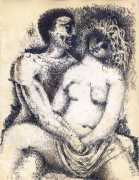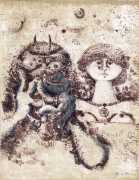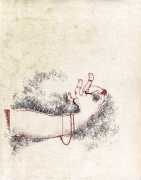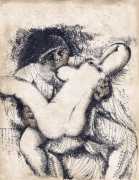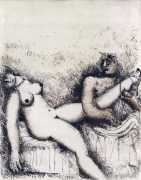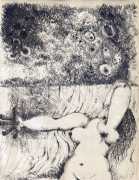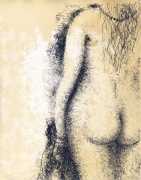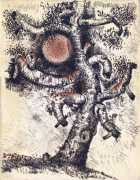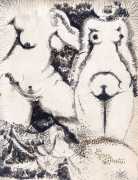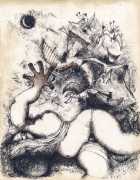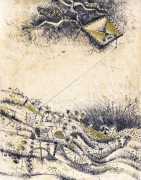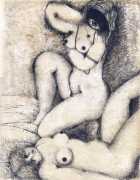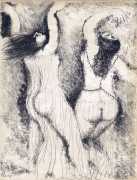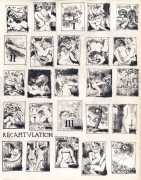 The Italian artist Federico Righi grew up in Trieste, where he lived and worked for most of his life. Primarily self-taught in drawing and painting, he was inspired by the aesthetic of the futurist movement of the early 1900s, as well as cubism and surrealism. He joined the Italian Futurist Movement in 1932, but after many artists were condemned for their ‘degenerate’ art, Righi, whose works often explored the surreal and erotic, distanced himself from any official affiliation.
The Italian artist Federico Righi grew up in Trieste, where he lived and worked for most of his life. Primarily self-taught in drawing and painting, he was inspired by the aesthetic of the futurist movement of the early 1900s, as well as cubism and surrealism. He joined the Italian Futurist Movement in 1932, but after many artists were condemned for their ‘degenerate’ art, Righi, whose works often explored the surreal and erotic, distanced himself from any official affiliation.
He began a exhibiting in 1941, participating in the Venice Biennale and holding his first solo show in 1947 at the Galleria Sandri in Venice. Several exhibitions in Italy gained him recognition as a painter and graphic artist, and he was invited to show at the Galerie Auriga in Bern, Switzerland, in 1957, and in Chicago the following year.
In addition to painting and printmaking, Righi was a muralist and theatre set designer – he was commissioned to design the décor for an Italian luxury liner fleet, and worked regularly for the Teatro Stabile in his hometown of Trieste.
By the 1960s Righi was an internationally recognised artist, with two major exhibitions of his fine prints at the Centro Friulano di Arti Plastiche in Udine in 1981 and 1985, the year before his death.

